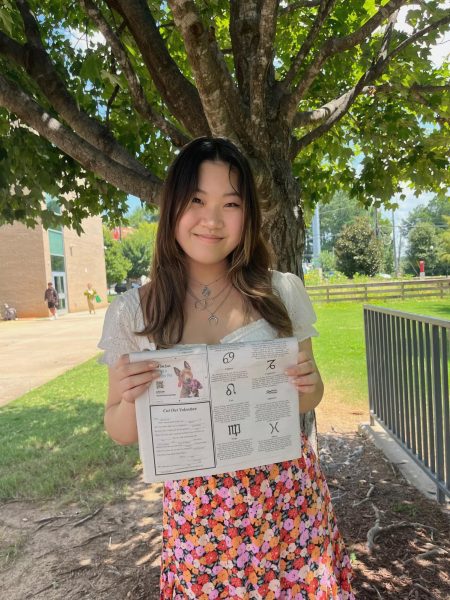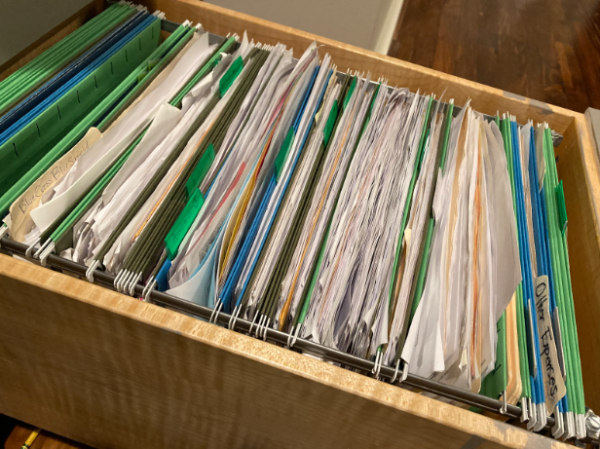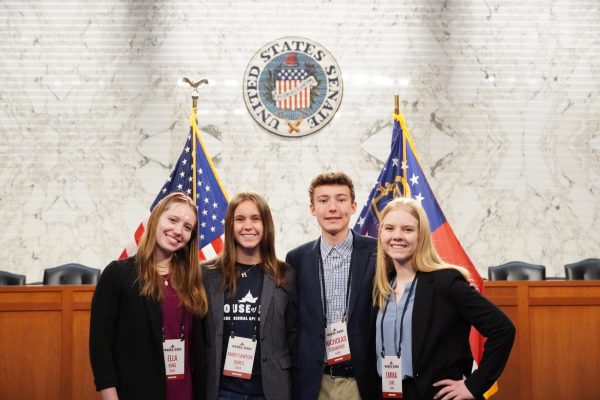InFLUence of the Flu Season on Chamblee’s COVID Sentiment
Photo Courtesy of the Blue & Gold
Rasesh Joshi gets ready for the flu season
As we enter this year’s flu season, the COVID-19 pandemic seems to be a thing of the past, with it being the fourth school year affected by the coronavirus. At this point, the student body has had much experience in coping with and adjusting to the pandemic, and has fallen back to a state of “normalcy.”
“I feel like [COVID] doesn’t affect my life in a significant way since I’m pretty much used to it just because it’s been here for a few years now, so it just doesn’t have that large of an impact,” said Peirong Gao (‘24).
These sentiments were echoed by others in the student population.
“I feel like COVID doesn’t really affect my daily life besides wearing a mask, which I’m used to, but overall I feel like most people think that it’s back to normal, and I feel that way as well,” said Gia Choy (‘26).
Despite this current situation, the effects of the COVID-19 pandemic can still be felt, like with missed memories and experiences.
“I feel like I missed out on a lot of experiences that could have happened. It could have changed my outcome for these coming years, especially when applying to college and things like that,” said Gabi Barrios (‘23).
Students are not the only ones being affected by the lasting effects of the pandemic- teachers also feel the repercussions of a full year of virtual learning and subsequent limitations caused by COVID.
U.S. History teacher Samantha Gilliam expresses how the coronavirus pandemic has influenced her current lesson plans.
“Having to keep in mind what you guys were supposed to have learned during the year [of] online school or virtual learning […] makes it hard to figure out […] when and where to do a full lesson for the first time, not a refresher,” said Gilliam.
This missing or incomplete understanding of concepts taught in previous courses creates the need for review, and thus may slow down the planned curriculum for the school year.
“There’s a lot of missing parts of knowledge that we would simply review in U.S. History that in some cases, we need to like actually spend time learning for the first time.” said Gilliam.
This translates to concerns for standardized testing as well, especially because testing services haven’t adapted to these factors as much as Gilliam has hoped.
“Unfortunately, the standardized tests, be it the AP Exam or the Milestones, haven’t taken any of that into consideration, so they still haven’t changed their expectations to understand that there’s a lot of back teaching that we need to do, but we’re not able to necessarily [do] because the [tests] aren’t changing,” said Gilliam.
In terms of personal precautions, some Chamblee students continue to choose to wear a mask as a safety measure, a lingering practice from earlier pandemic times.
“I just wear it because I don’t want to get sick,” said Alex Coursey (‘26).
This reasoning of preventing illness and self-protection is shared among other interviewees.
“I choose to mask since at GHP everyone was unmasked and then we all got COVID, so that’s why I’m just cautious here, but I’m aware that that doesn’t really happen a lot anymore and a lot of people aren’t getting COVID as much,” said Gao.
However, the common position among both masked and unmasked students is that masking is ultimately a choice that individuals should be able to make. This is especially true with considerations to the current situation and strides to return to “normalcy” and pre-pandemic conditions.
“I think masking is useful […] like protection from disease and all, but I think after a certain point it shouldn’t be mandatory. If it’s under control, then I think that you can start having some things come back,” said Suhayb Ahmedin (‘24).
Other factors in the choice to mask include personal contexts and levels of comfort.
“I honestly think it’s up to you if you want to wear it or not. Especially if you are more susceptible to becoming sick, I would definitely wear the mask. I feel like it’s just up to choice at that point as to what makes you feel comfortable or not,” said Barrios.
Masking is also more common in comparison to prior to the pandemic and can be an option for safety during the flu season.
“I think COVID made it more [of] a thing now to mask and social distance for protecting against diseases, so I think that’s something that’s going to continue with other pandemics, like with the flu season,” said Ahmedin.
Influenza is a recurring disease, with a variety of different strains affecting many during the fall season, especially younger children and the elderly. While adolescents are not as affected by the flu as these other demographic groups, it is still a good practice to be vaccinated.
“I have already gotten the flu shot at CVS Pharmacies,” said Choy.
Likewise, many students express comparable views on getting the second COVID booster vaccine, with many planning to get the vaccine.
“It probably would be wise for me to get [the booster],” said Barrios.
Ultimately, while the coronavirus is no longer the pressing concern it once was, it’s still a topic of conversation at Chamblee. Since we are in the middle of the influenza season, protect yourself and others as you see fit- practicing extra safety measures is never detrimental!
Your donation will support the student journalists of Chamblee High School Blue & Gold. Your contribution will allow us to print editions of our work and cover our annual website hosting costs. Currently, we are working to fund a Halloween satire edition.

Hannah Choy (‘24) is a senior and editor of the Blue & Gold. In five years, she hopes to be happy wherever life has taken her, and is doing things she is passionate about. Her three favorite things are matcha, baking for loved ones, and Spotify friend activity!











B&G's #1 Fan :) • Nov 2, 2022 at 11:58 pm
Yay Hannah! Such an informative & relevant article!!